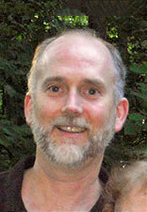Class Meetings
The class meets in two places:
- The CIT, at the corner of Waterman and Brook Streets, room 506
- The YURT, at the 180 George St. room 102B
Please check the calendar for when and where to meet. Classes are on Tuesdays and Thursdays from 10am to 12pm.
The first class meets Thursday, September 10th at 10am in 180 George St. room 102B.
Personnel
| CS Instructor | Illustration Instructor | Biology Collaborator | Teaching Assistant | |
|---|---|---|---|---|
| Name | David Laidlaw | Fritz Drury | Stephen Gatesy | Johannes Novotny |
| dhl@cs.brown.edu | fdrury@risd.edu | stephen_gatesy@brown.edu | novotny@cs.brown.edu | |
| Office | Brown CIT 521 | RISD ISB 102 | Brown Biomed Center 209 | Brown CIT 549 |
| Phone | 863-7647 | 454-6241 | 863-3770 | |
| Face |  |
 |
 |
 |
Email all instructors and TAs with questions or comments at cs137tas@cs.brown.edu.
Much of the course will include working in the YURT at 180 Gearge St., so you may need to contact the staff if you have questions or problems that arise. The Brown Center for Computation and Visualization (CCV) provides support for the YURT as well as the Granoff Cave, and John Huffman is our resident expert who can help with software and hardware concerns related to the both Cave systems.
You can learn more about the research discussed in class by visiting the websites of David's group.
Course Description
In this class we will experiment with and learn about design as it applies to scientific applications in virtual reality.
Goals for the class:
- explore the visual and interaction design process for scientific visualization in immersive virtual reality
- familiarize students with immersive virtual reality and with design and implementation in this new medium for scientific illustration
- help develop artists and designers who can interact with domain scientists and computer scientists in this new design process
- help develop computer scientists who can interact with domain scientists and artists/designers
- develop and evaluate new visualization and interaction designs for some specific scientific visualization problem, dinosaur footprint analysis and hand bone kinematics and dynamics
- build an interdisciplinary intercollegial bridge between Brown physical sciences and RISD
Aims
At the end of CS137, students will also have had experience with:
- carrying out an interdisciplinary research project;
- effectively communicating with collaborators in other disciplines;
- expressing their scientific ideas more clearly both in writing and orally.
Objectives and Course Content Overview
The course will be organized around designing interactive visual solutions for exploring 3D animal motion and fluid flow datasets. We will work with collaborators in Computer Science, Illustration, and Evolutionary Biology in this design process.
We will learn about the scientific problem as well as about the interaction and visualization challenges that arise when addressing the scientific issues. We will learn about our "medium:" immersive virtual reality -- 3D computer graphics in an 8x8x8 foot cube of display screens. We will learn about design by designing visualization solutions to sub-problems of the larger problem. We will learn about communication by presenting and evaluating our designs based on the scientific needs. We will learn about evaluating our work by doing expert and group crits, by getting formal and informal feedback from users, and by doing reviews with one another. Finally, we will learn about some of the larger design issues by aggregating solutions to sub-problems into larger, more complete solutions.
Each student, sometimes alone and sometimes in a small group, will design and/or realize several visualization approaches during the semester culminating in a final project. During the semester we will also read about related design and scientific visualization work to put our work in context. See the class outline and class by class schedule for more details.
Assignments and Assessment
There is an assignment due every week! Assessment will be based on a combination of performance on assignments and in class. Much of the success of this class depends on the group critiques that will be held in class, and students are expected to participate in all of these. Late assignments will not be accepted, because they cannot be critiqued in class. Please keep up to date using the calendar page. Also note that, in addition to the parts of the assignments that will be critiqued in class, there are brief written handins due quite frequently.
We expect assignments each week to take ten to fifteen hours beyond the four class hours. Assignments will include targeted readings about visual design, the state-of-the-art in visualization, some engineering and mechanics, and some readings about anatomy and evolution. Because the class will have two distinct student populations, some of the design assignments may be done in small groups, typically pairs. We will strive to create assignments where everyone can learn about the design, implementation and evaluation processes, and about how to collaborate and appreciate one anothers skills and expertise.
Readings
Readings will be copied and handed out or made available via the calendar page. On the calendar, each reading is listed under the class session for which it should be read. This means that you should look ahead to the next class session and do the readings before class meets.